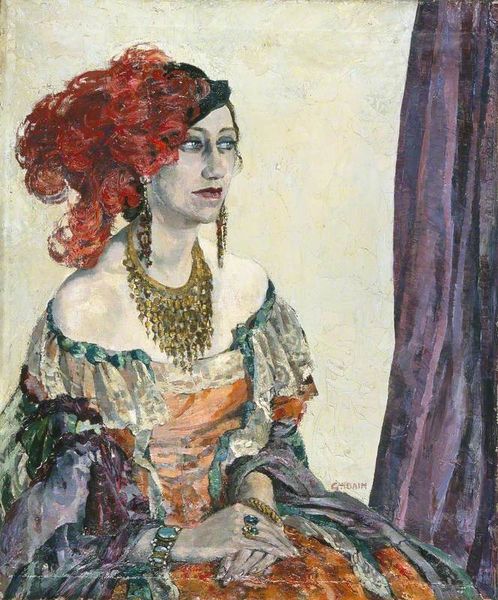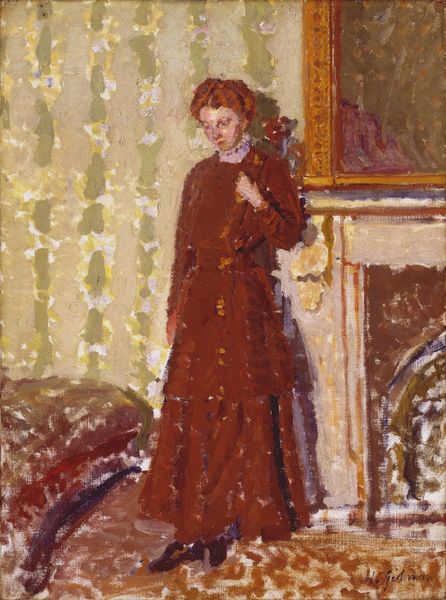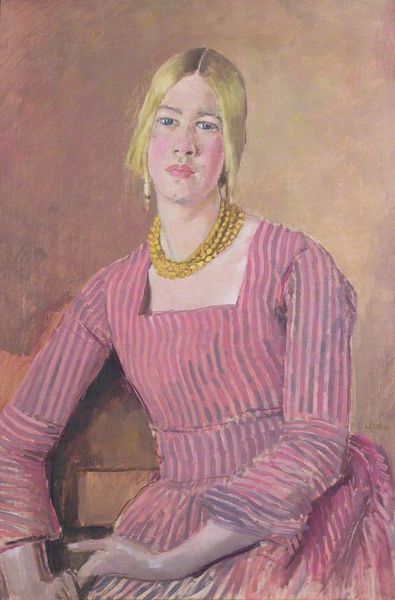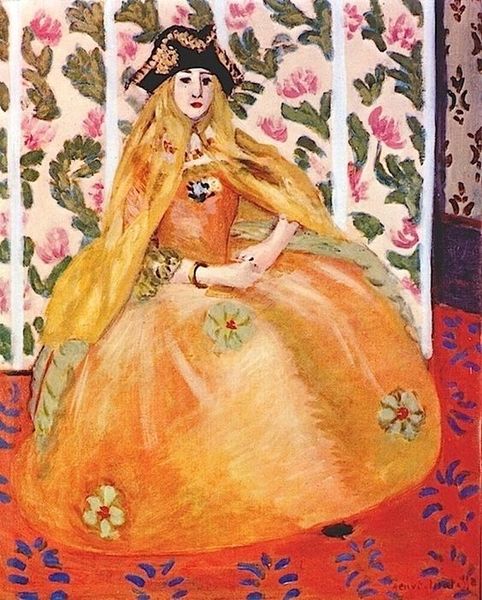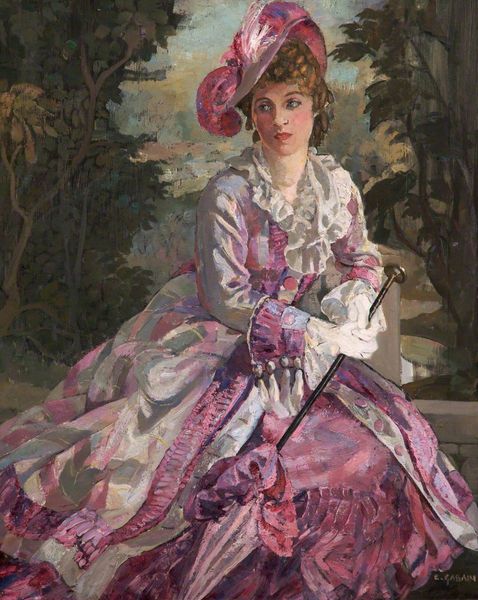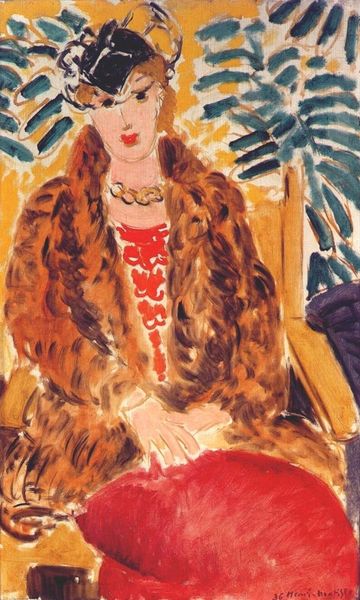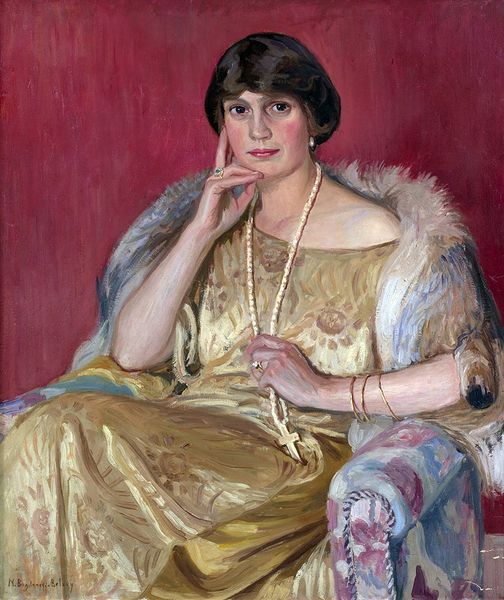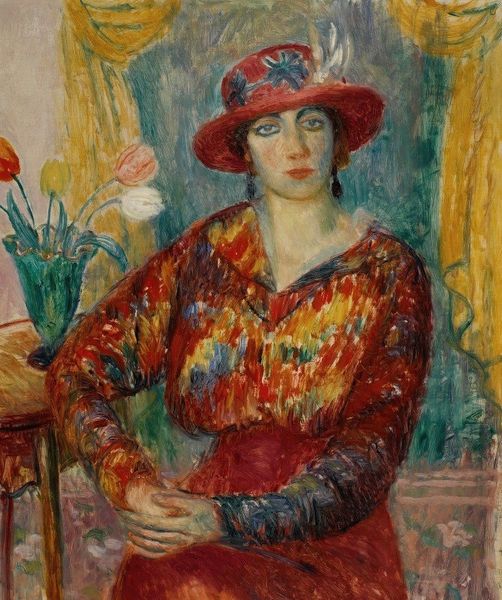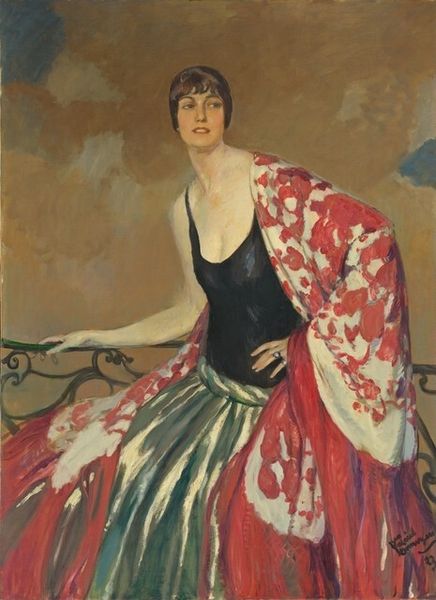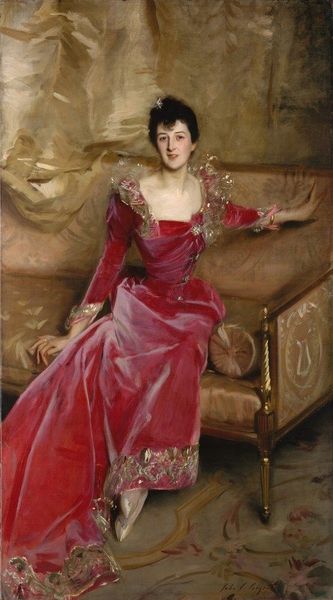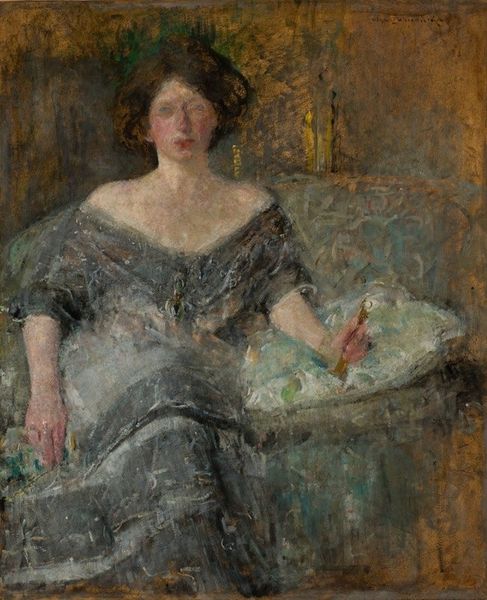
painting, oil-paint
#
portrait
#
painting
#
oil-paint
#
figuration
#
oil painting
#
genre-painting
#
modernism
Copyright: Public domain
Curator: Let’s consider Ethel Léontine Gabain's "Peggy Ashcroft as Juliet, London," an oil painting dating to 1935. Editor: She looks incredibly serious, doesn’t she? There's a pensive stillness about her, yet the fiery dress and bold background create a certain tension. It’s almost as if she's bracing herself before stepping onto the stage. Curator: Indeed. It captures Ashcroft during a pivotal moment in her career, where her interpretation of Juliet helped define modern Shakespearean acting. The artwork immortalizes her powerful stage presence, reflective of the rise of women in theatre. Editor: That explains her confident poise, despite her look into the distance. It’s fascinating how the fabric mimics the theatrical curtains. All those golds and reds evoke such richness; you can almost feel the weight of history, all the Juliets that have come before and, frankly, all the drama ahead. Curator: And that is certainly not unintentional. Gabain created this piece to not only showcase the subject's artistic ability, but to highlight the public’s growing love for theatrical productions and celebrities during the early twentieth century. This new appetite for stage and stardom created significant cultural shifts. Editor: Thinking about how images create those shifts makes the artist part of the show, the celebrity-making machine. I love how her regal stance really allows you to perceive Ashcroft as more than the typical damsel; she seems to have an understanding, like the events of the play are almost her fault. A tragedy queen, if you will. Curator: Precisely! That reading aligns perfectly with what Gabain aimed to depict; a multifaceted interpretation of the character which paralleled how actresses sought roles that challenged conventions. Her ambition can be understood against the broader societal shifts toward greater gender equality at the time. Editor: What’s so inspiring about this painting is how the past is blended so seamlessly with the future; I guess it only seems right to use oil-painting for a production of Shakespeare, since that painting method also had such an exciting debut so long ago. Gabain clearly was reaching for something enduring, I can still feel that ambition nearly a century after its creation. Curator: The interplay of the historical and the modern truly stands out here. Thinking about this, I will not perceive another painting the same. Editor: For me, it makes me wonder: what modern day tragedies are still missing queens?
Comments
No comments
Be the first to comment and join the conversation on the ultimate creative platform.
